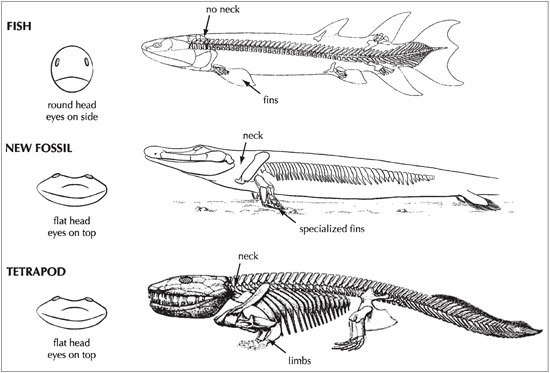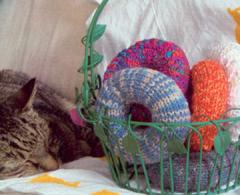
This Article From Issue
May-June 2008
Volume 96, Number 3
Page 257
DOI: 10.1511/2008.71.257
Your Inner Fish: A Journey into the 3.5-Billion-Year History of the Human Body. Neil Shubin. x + 229 pp. Pantheon Books, 2008. $24.
Ernst Haeckel's punchy three-word slogan "Ontogeny recapitulates phylogeny" has earned a certain immortality—never mind that it's wrong. Each species does not, as Haeckel claimed, retrace its evolutionary history as it develops, with human embryos going through fish and reptile stages. But that's not to say that ontogeny (the history of individuals) has nothing to do with phylogeny (the history of species). Neil Shubin's delightful new book, Your Inner Fish, adopts the premise that ontogeny and phylogeny hold the keys to understanding our own bodies. The "inner fish" of the title—the imprint of our fishy ancestors on our anatomy—is just one member of a menagerie that lurks within us. The book tours this whole zoo to explain the peculiarities of our bodies and to verify our membership in the animal kingdom.

Shubin, who is Provost of the Field Museum and Robert R. Bensley Professor and Associate Dean of Organismal Biology and Anatomy at the University of Chicago, is one of the discoverers of Tiktaalik, the 375-million-year-old fossil believed to be a "missing link" between fish and the first land vertebrates, or tetrapods. The book is a strange brew that combines his professional interests—developmental biology, human and comparative anatomy, molecular biology and paleontology—with a memoir of his career. Nevertheless, it goes down well, leaving the reader thirsty for more.
The book emerged in part from Shubin's research on the evolution of tetrapods from fish, which has focused particularly on the evolution of limbs from fins. He describes discoveries that have informed this subject from the 19th century to the present, including his own work and that of his students, teachers and collaborators. Another stimulus was his realization that advances of this sort, and the multidisciplinary approach that led to them, offer unique insights into human anatomical quirks—insights that he found useful in teaching gross anatomy to medical students. Shubin's story is a timely reminder that research and teaching go hand in hand.
The book offers good examples of anatomical evolution for evolutionary biologists. Those outside the field will appreciate the jargon-free presentations. Shubin supplies up-to-date answers to questions that some readers may never have asked. For example, why do fish bodies seem to be so simple and well designed, whereas our own bodies appear to have undergone a series of botched renovations by several generations of incompetent home-improvement contractors? No intelligent design here!
Shubin also describes his own professional ontogeny. Initially he planned to study the origin of mammals, but first he had to learn how to find fossils. As he got the knack of it, he made a string of finds in outcrops in the Bay of Fundy (as the tide rushed in), in road cuts in Pennsylvania (as trucks whizzed by) and on the cold, isolated, barren grounds of Ellesmere Island in the Canadian Arctic Archipelago (as polar bears lumbered by—or was that an Arctic hare?). Along the way, his interest in the origin of mammals fell by the wayside, and he became enthralled with the evolution of tetrapods from fish.
The book opens with an account of how Shubin and Ted Daeschler (who was Shubin's student at the time and still collaborates with him) picked Ellesmere Island as the place to search for a missing link between fish and tetrapods. They stumbled across the information that the island contained unexplored rocks of the right age in a geology textbook. In the course of telling that story, Shubin presents a plain-English explanation of the basic principles of geology and biological classification.
Shubin's keen interest in limb evolution is apparent as he describes the unique qualities of Tiktaalik and compares its jointed fins with the limbs of the early tetrapods. "The earliest creature to have the bones of our upper arm, our forearm, even our wrist and palm, also had scales and fin webbing," he concludes. Limb development has been crucial in experimental embryology and developmental genetics, and he explains in some detail how genes such as sonic hedgehog act and how blobs of cells react to form a fin or a limb.
A discussion of teeth and how "wonderfully informative" they are follows. Several anecdotes about looking for teeth in the field illustrate Shubin's transformation from novice fossil prospector to accomplished collector. He discusses the interactions that occur between tissue layers during the development of all structures in the skin—not just teeth, but scales, hair, feathers, sweat glands and mammary glands.
Next comes an account of the 12 cranial nerves, which emanate directly from the brain. Shubin recalls studying them alone late one night in the dissection lab, surrounded by 25 cadavers. After panicking and fleeing the lab, he calmed down and returned to learn some fascinating facts about the anatomy of the head and how ancestral gill arches in human embryos give rise to the throat, jaws, ear bones and facial muscles.
At this point Shubin introduces the Hox genes, which provide a blueprint for the body. He notes that the body plan of a human has numerous properties in common not just with the body of a frog or a fish but even with that of a creature so seemingly different from us as a sea anemone. Then he turns to the body's construction schedule, explaining what the bricks and mortar are, what the edifice is good for, and why the blueprint sat around for several million years until an oxygen-rich atmosphere formed. Further along, he explains the evolution of the senses of smell, vision and hearing. The first two receive only cursory treatment, but hearing gets more attention, because the three tiny bones of the mammalian middle ear are the classic case of a radical anatomical makeover: They evolved from two separate ancestral gill arches and their muscles are served by two separate cranial nerves.
The book closes with a look at the applications of evolutionary principles to medicine. What we know about the evolution and development of body plans can help explain some human maladies. Our circulatory system, for example, first appeared in very active animals, whose activity helped push blood back to the heart; the sedentary habits of modern life and our upright posture cause blood to pool downhill from the heart, making us prone to varicose veins and hemorrhoids.
Descent with modification has left its mark; closely related species share evolutionary innovations that are absent in more distant relatives. These shared innovations can be used to infer the tree of life, to understand what that inner fish is doing in there and to explain why much of what ails us is a consequence of endless tinkering, which turned a fine fish into the collection of Rube Goldberg contraptions we call the human body.
Your Inner Fish does an excellent job of highlighting the important evolutionary insights that can be gleaned from anatomy. It's a topic that could make the reader's eyes glaze over, but Shubin's rendition is anything but dull. Using the light of evolutionary and developmental history, he illuminates seemingly incomprehensible properties of the human body. He notes that these histories have led us to expect anatomical innovations to appear in the fossil record at certain geological times, and he points out fossil finds that have fulfilled these expectations in exquisite detail.
The book is multifaceted, entertaining and informative. The illustrations are well executed and useful, although some would have been even more useful had they been in color. And items in the 12 pages of "Notes, References, and Further Reading" are exceptionally well chosen. Unfortunately, however, a handful of minor errors have crept into an otherwise authoritative book. For example, although Shubin initially says (correctly) that the malleus and incus are derived from the first gill arch and the stapes from the second arch, later he gets it backward, saying that it's "the stapes from the first arch, and the malleus and incus from the second arch."
My only other criticism is that the author passes up an excellent opportunity to make another crucial point based on anatomy: that, as the great population geneticist Theodosius Dobzhansky wrote in 1973, "Nothing in biology makes sense except in light of evolution." I wish Shubin had emphasized that the existence of our inner fish makes no sense except in light of evolution, and that its presence is itself a refutation of creationism.

American Scientist Comments and Discussion
To discuss our articles or comment on them, please share them and tag American Scientist on social media platforms. Here are links to our profiles on Twitter, Facebook, and LinkedIn.
If we re-share your post, we will moderate comments/discussion following our comments policy.